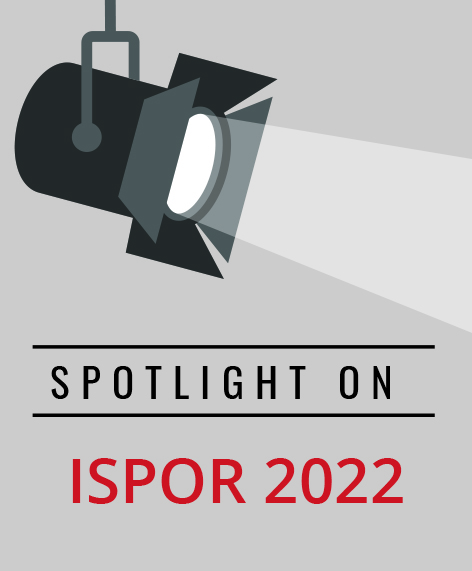What Treatment Attributes Do Patients Value? Using Discrete Choice Experiments to Understand the Complex Trade-Offs Made by Patients
Mark Bounthanvong, PharmD, PhD, UCSD Skaggs School of Pharmacy & Pharmaceutical Sciences, San Diego, CA, USA; Enrique M Saldarriaga, MS, The Comparative Health Outcomes, Policy, and Economics (CHOICE) Institute, University of Washington, Seattle, WA, USA
Discrete choice experiments (DCEs) have changed the way we elicit patient preferences, opening the door to understanding how patients make complex benefit-risk trade-offs with treatments. DCE is based on consumer and random utility theories, which explains how individuals maximize their utility function based on a set of choices, differentiated by characteristics (ie, “attributes” in DCE jargon).1,2 Rather than use a declared-preference measurement, DCEs present several choice tasks to every participant and use the collected data to quantify trade-offs made across attributes and elicit the ranking of preferences of the sample. During the ISPOR 2022 Annual Meeting, 3 podium presentations, moderated by Ellen Janssen, PhD (The Janssen Pharmaceutical Companies of Johnson & Johnson, USA), were delivered focusing on the application of DCE for patient preference elicitation (Figure).
Figure. Session panelists.

Top (left to right): Ellen Janssen and Hannah Collacott. Bottom (left to right): Susan DosReis and Rosanne Janssens.
Rosanne Janssens, MS (KU Leuven, Belgium) and colleagues administered a preference survey that was based on DCE and Swing-Weighting principles to patients with multiple myeloma in Europe to evaluate which treatment attributes—namely, side-effects, symptoms, efficacy outcomes, and uncertainties—were most important. In a sample of 393 patients with multiple myeloma from 21 countries, respondents with the most and least prior therapies valued life expectancy. Overall, patients with intermediary treatment experience valued those attributes that target symptoms of myeloma and side effects. However, patients had difficulty trading life expectancy with quality of life, which was further complicated by the patient’s side effects and symptoms. Moreover, patients highlighted the need for psychosocial support to address disease-related symptoms, treatment side effects, and uncertainty. Ultimately, assessing and using patient preferences will have an important impact on medical product decision making.
In the second presentation, Susan dosReis, PhD (University of Maryland School of Pharmacy, USA) and colleagues performed a study to elicit patient preferences for major depressive disorder treatment. A DCE was administered to 150 community-dwelling adults with major depressive disorder in the United States, which was based on 6 attributes: (1) treatment modality, (2) time to effect, (3) days of hopefulness, (4) improvement in productivity, (5) impact on relationships, and (6) out-of-pocket costs. dosReis and her team reported that relations with others and out-of-pocket costs were attributes that patients value; moreover, patients valued social and life impact outcomes over time to treatment effect and productivity. “These therapeutic options do carry their own benefits and risks, and these factors can certainly influence an individual’s preference for treatment and their treatment decisions,” said dosReis. By understanding patient preferences, providers may be better informed to identify optimal treatment for major depressive disorder that focuses not only on the clinical end points, but those attributes that patients value.
"Treatment of the disease remains an important goal for clinicians but having a deeper understanding of the patient’s preferences will help improve the overall quality of care."
In the final presentation, Hannah Collacott, MSc (Evidera, United Kingdom) presented her team work on the trade-offs patients with nonmuscle invasive bladder cancer must make when their first line treatment fails. Treatment options are limited and bladder removal (radical cystectomy) is the most frequently used. Collacott underlined the importance of “understanding patient’s willingness to make such benefit-risk trade-offs,” which have important implications on “treatment development, treatment evaluation and understanding patients’ treatment priorities.” Collacott and her team administered an online DCE in the United Kingdom, France, Germany, and Canada to 107 patients who were diagnosed with nonmuscle invasive bladder cancer and treated with Bacillus Calmette-Guerin intravesical therapy. The DCE contained 4 attributes (ie, time until radical cystectomy, administration, risk of progressing to muscle-invasive disease, and risk of experiencing serious side effects) and used 12 experimental choice tasks. Patients valued delay in time to radical cystectomy as an important attribute of treatment. Additionally, patients were willing to trade off increased risk of progression to muscle invasive bladder cancer to delay radical cystectomy by 2.3 years and increased risk of side effects to delay radical cystectomy by 0.8 years.
Each presenter highlighted the importance of incorporating patient preferences in treatment decision making, particularly in circumstances where the patient must navigate the complexities of benefit-risk trade-offs, as well as the potential benefits of developing drugs aligned with patients’ priorities. Treatment of the disease remains an important goal for clinicians but having a deeper understanding of the patient’s preferences will help improve the overall quality of care.
References
1. Lancaster KJ. A new approach to consumer theory. J Polit Econ. 1966;74(2):132-157. doi:10.1086/259131
2. McFadden D. Computing willingness–to–pay in random utility models. In: Trade, Theory and Econometrics. Routledge; 1999.

